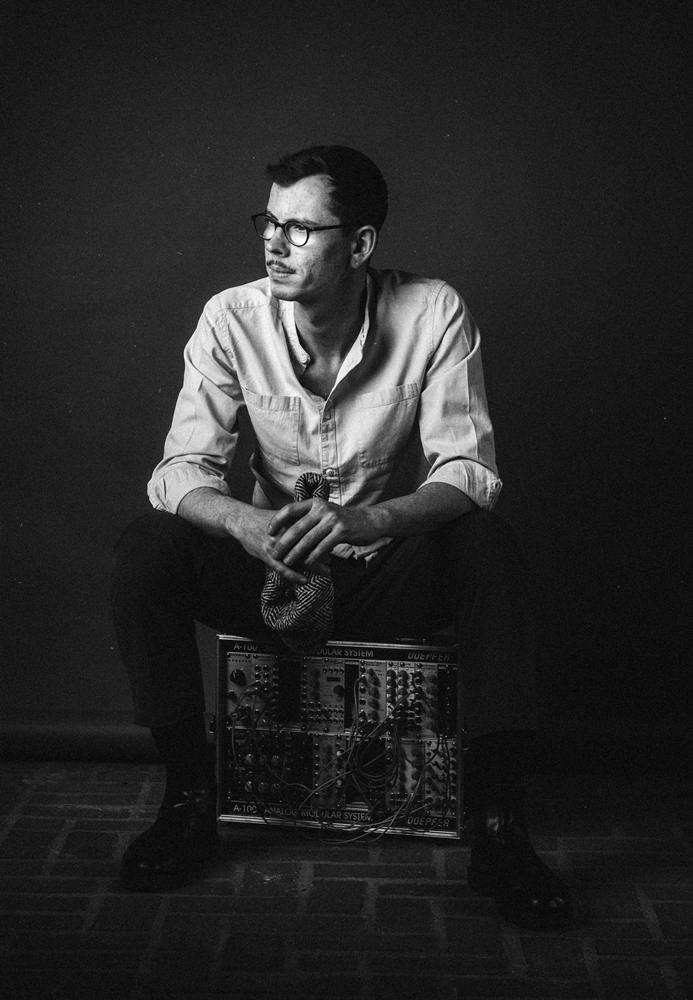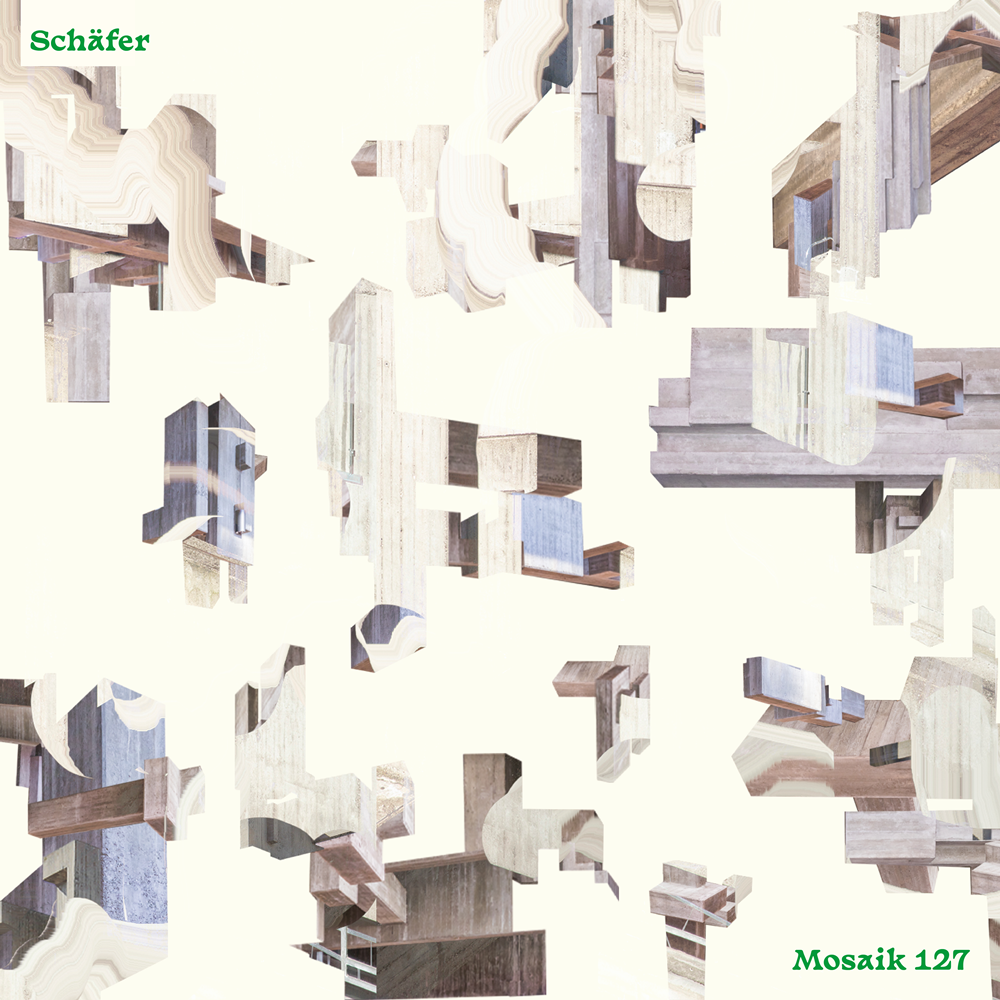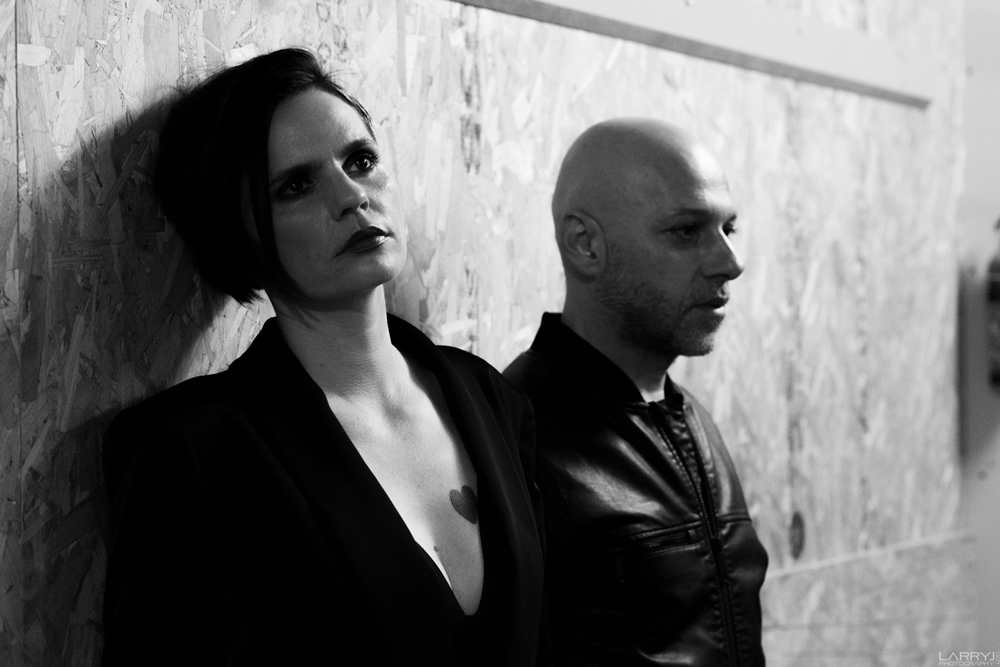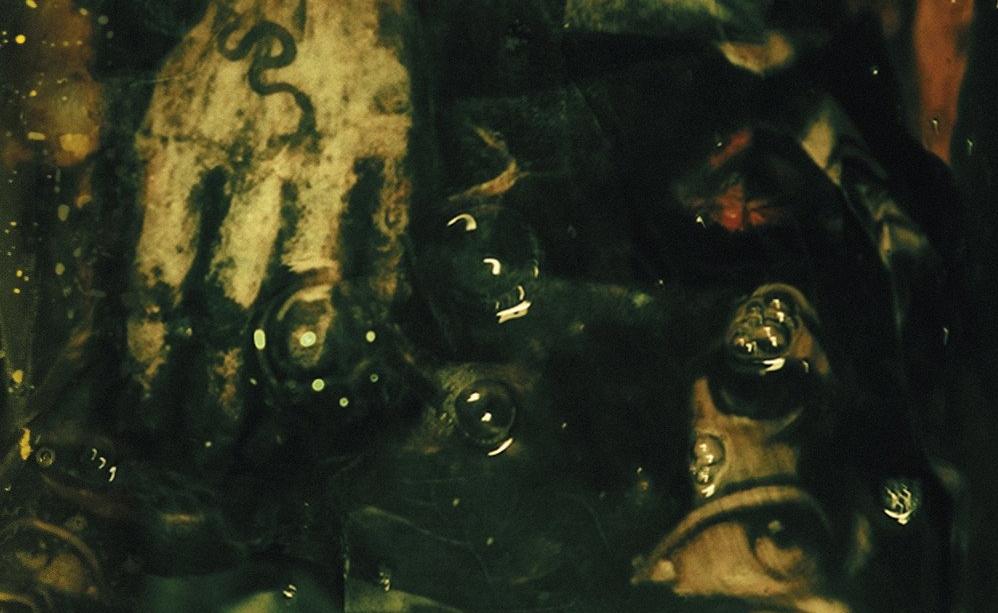Schäfer is the solo project of the Cologne-based musician Lukas Schäfer. Coming from playing drums, he increasingly dealt with electronic sound generators and modular synthesis. Mastering a modular synthesizer, as we all know, is a science in itself, work that Schäfer immersed himself in during the pandemic stagnation of 2020.
With “Mosaik 127”, out November 5th on Acoustic Motion Concepts, Schäfer presents an ambient music album that convinces sensual dynamics, contrasting depth, and artistic independence. The new single ‘Still’ is taken from “Mosaik127”.
Chains of associations and mind games form its conceptual foundation. It is a mosaic – every single part is significant and has its origin in the Church of Johannes XXIII situated in the Berrenrather Straße 127 in Cologne, Germany. The Brutalist church can confidently be described as a walk-in sculpture. A huge cubic-branched concrete tree unfolds in its center and is bordered by fair-faced concrete walls and stained glass windows. This is where the compositions of “Mosaik 127” first echoed; Schäfer designed them with the church’s impressive acoustics in mind. It was here that the musician realized that ambient music would become an important part of his artistic work. A short time later, he founded the Sono collective for ambient music and spatial music together with eight other musicians from Cologne, who since then work on the borderline between Brutalist architecture and music.
A four-tone steamroller coming out of nowhere: this is how “Mosaik 127”’s album opener ‘Valentine’ begins. The title is a reference to the Irish-British shoegaze band my bloody valentine whose music is characterized by dense guitar sounds and the excessive use of effect pedals. Schäfer transfers this „wall of sound“ to his modular setup and pushes a massive, pulsating chord progression out of the filter. The distortion textures and filter artifacts can be experienced as a sonorous yet delicate journey of discovery.
Individual labial sounds mingle with the fading sizzle and noise of the filter. A residency program of the Catholic University Community Cologne (KHG) in the mountains high above the city of Bolzano gave the third track its name: ‘Bolzano’. Schäfer got to know the KHG, to which the Church of Johannes XXIII belongs, as a cultural institution in which radical trust was placed particularly in artists. The conflict about the student community’s liberal attitude forms a social mosaic stone in the creation of the album. This is still music of the future when Schäfer lets his gaze wander over Etsch valley. Chords form like clouds; a sound study still opens in all directions, where one wants to listen to every single note. Only late on do melancholic tones rise from the deep valley and reinterpret Bolzano as an introverted evensong.
‘Still’ begins with an activating, iconic arpeggio. It symbolizes an intense, timeless moment. Arranged like a song with an epic chorus, ‘Still’ keeps rising, takes a run-up over breaks, strides in circles with a clicking kick drum, lingers, blur. While the moment still reverberates, circling movements, dancing bodies, and twitching lights continue to flicker before the inner eye.
‘Bielefeld’ developed out of a sketch for a radio play, which was created during a collaboration with the writer Juliana Kálnay. Kálnay had been commissioned by the Literaturbüro OWL to write an associative approximation to the East Westphalian city. Elaborated and extended by an interlude, Schäfer’s music literally floats across the streets and squares of Bielefeld in the midday heat of a summer of the century. A monophonic synthesizer voice evokes the illusion of a melody, but it remains a brief suggestion, an escape from inert aimlessness.
‘Somerset’ comes across as mysterious and vibrant. What sounds like a Swedish bank holiday is actually the name of a county in the southwest of England. Rainy countryside, a lot of time, and many sheep characterized Schäfer’s youthful family holiday. ‘Somerset’ is a shimmering soundtrack for flowing days that seem to be on the verge of a major event. For suddenly tension builds up and finally tips over into a pumping chorus. Here Schäfer shows his talent for sound design. A single synthesizer voice is in focus, plays bass and melody at the same time. Behind it, a polyphonic electronic wall like a rain veil, which surreally changes its direction and finally rises towards the sky.
High, wood-paneled studio rooms, decades-old acoustic instruments, and vintage recording equipment: this is the natural habitat of the Berlin-based musician Nils Frahm. Inspired by his work between contemporary classical music, film scores, and ambient music, Schäfer wrote the piece ‘1 for N.F.’. Analog synthesizer sounds full of character, paired with the iconic Roland Space Echo are the cutlery for the album’s final track. The tones grope their way in and slowly but surely make room for themselves, a musical Darwinism in the best sense. Their calm development and the subtle sound of tape echo give the piece the aura of a ‘Tai- Chi exercise’. The album does not end in euphony, but with a secondary friction. Daring and unerring, Schäfer builds up tension for his next album. A successful musical cliffhanger.
“Mosaic 127” is a concept album whose mosaic stones fit together like the colorful windows of the Church of Johannes XXIII. This is also evident in the album’s artwork, which constitutes a strong visual layer in the overall design of “Mosaik 127″. The colorful opulence of the stained glass window collages and the grey brutality of the concrete elements form a contrast that can also be found musically in the changing sound qualities. The digipack with its recycled tray and the 12-page leporello booklet, composed of two works by collage artist Örn Ingi Unnsteinsson, create a generous haptic added value that literally plays into the hands of fans of analog music and artwork.
Follow Schäfer on:
Instagram | Website | Youtube
Photo: (c) Karl F. Degenhardt








